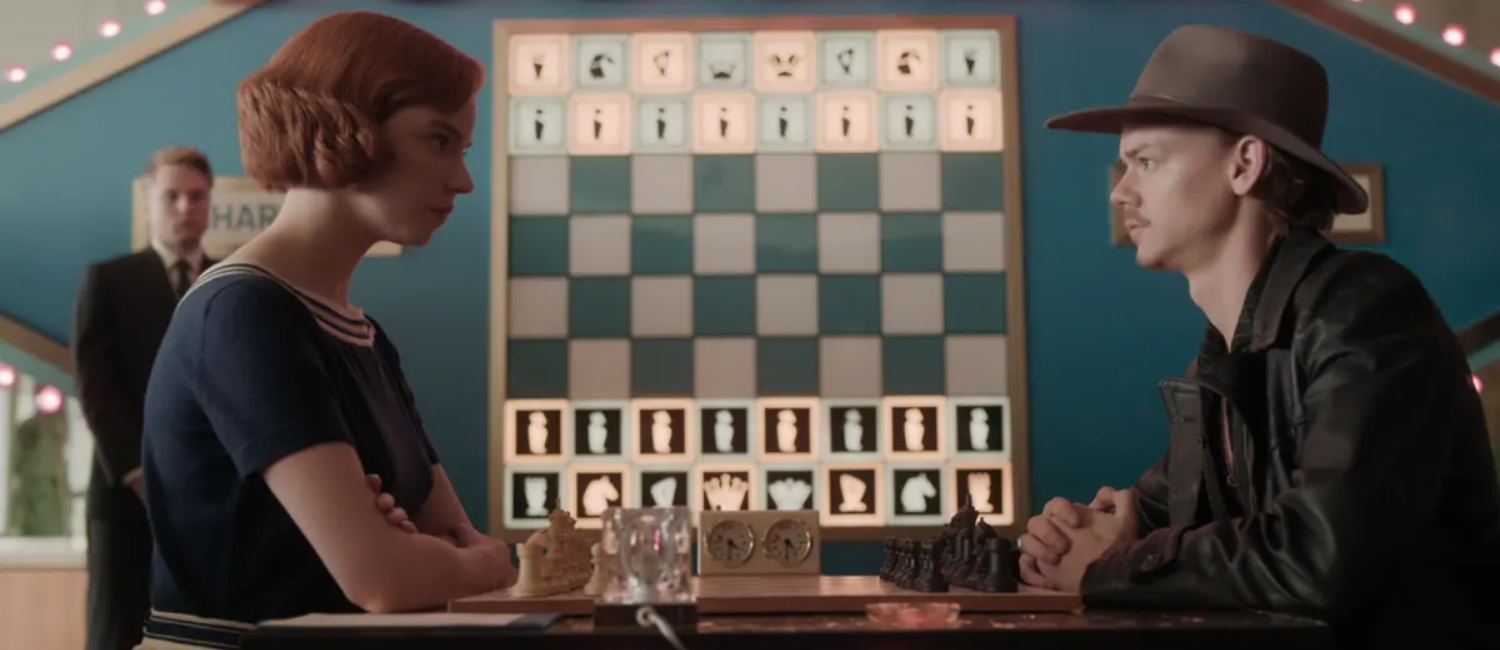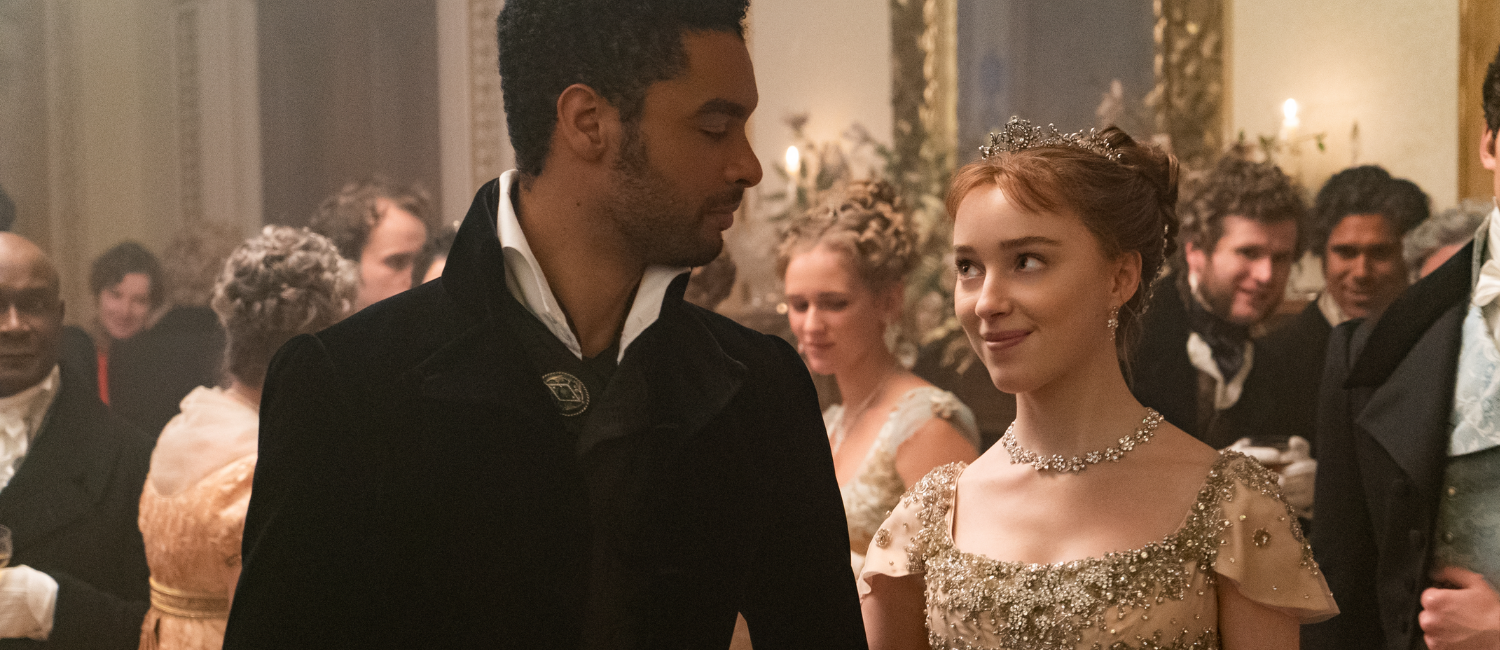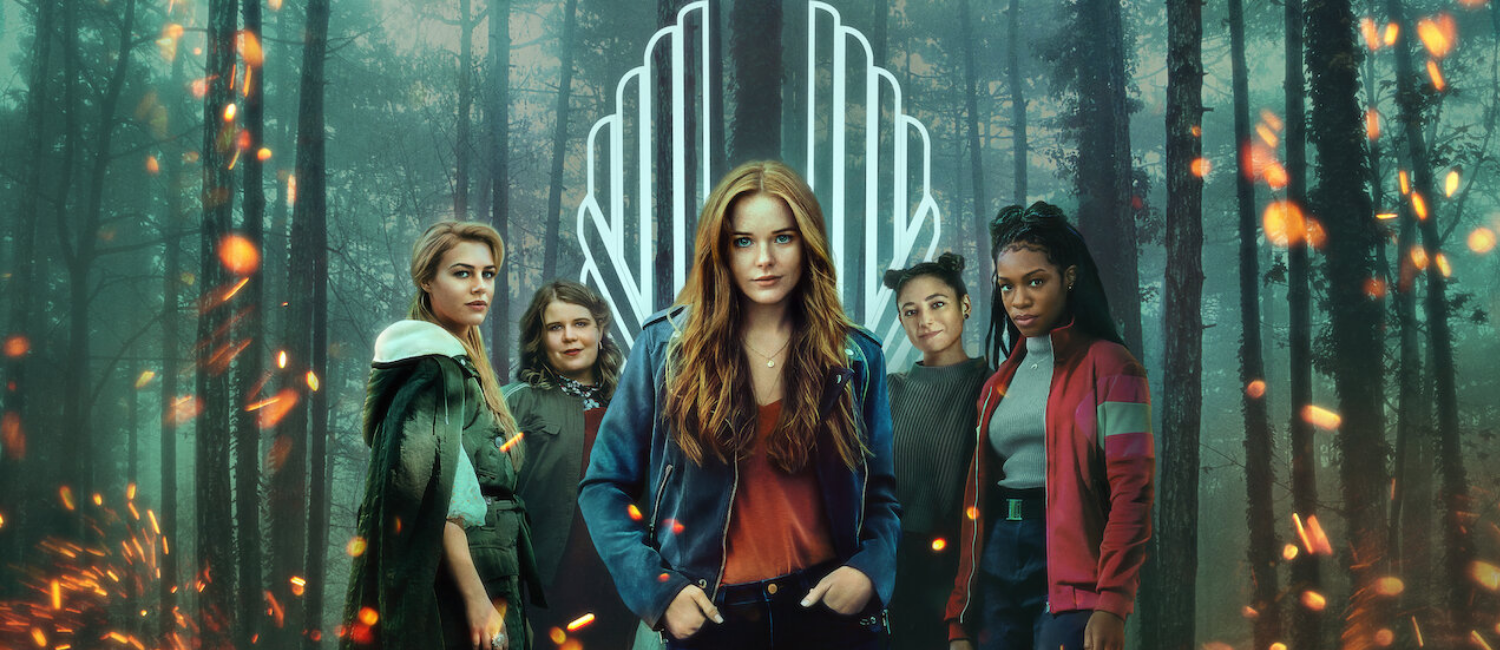A Review of Netflix's Breakout Series: The Queen's Gambit, Bridgerton, and Fate: The Winx Saga
Written By: Vanessa Leung, 1st Year Business Management & Organizational Studies
A gifted chess player with drug addiction, a scandalous love affair set in 1813 Regency London, and fairies and specialists banding together to fight “Burned Ones”. During peak midterm season, I binged Netflix’s breakout series, so you don’t have to. Here’s a review of the three most anticipated and watched shows on Netflix.
Disclaimer: mature content and spoilers ahead!
The Queen's Gambit (A+)
 If there was one good thing that came out of 2020, it was the Queen’s Gambit. This miniseries is a coming-of-age drama set in the 1960s that captivates audiences with the endearing life story of chess prodigy, Elizabeth Harmon. The film hinges on the child prodigy trope but it differs from other stories of a similar nature because the protagonist isn’t perfect. What makes this show enthralling is Harmon’s battle with her drug addiction. Harmon believes that her talents in chess derive from her intake of “green pills” that were prescribed to her when she was an orphan. This belief leads Harmon to question her abilities and shove pills into her mouth when faced with challenges on the chessboard. Harmon’s substance abuse exacerbates when her foster-mother introduces her to alcohol. Although Harmon competes against increasingly talented chess players throughout the series, her largest competitor is her drug addiction.
If there was one good thing that came out of 2020, it was the Queen’s Gambit. This miniseries is a coming-of-age drama set in the 1960s that captivates audiences with the endearing life story of chess prodigy, Elizabeth Harmon. The film hinges on the child prodigy trope but it differs from other stories of a similar nature because the protagonist isn’t perfect. What makes this show enthralling is Harmon’s battle with her drug addiction. Harmon believes that her talents in chess derive from her intake of “green pills” that were prescribed to her when she was an orphan. This belief leads Harmon to question her abilities and shove pills into her mouth when faced with challenges on the chessboard. Harmon’s substance abuse exacerbates when her foster-mother introduces her to alcohol. Although Harmon competes against increasingly talented chess players throughout the series, her largest competitor is her drug addiction.
It’s truly a cinematic experience to watch Harmon’s ginormous eyes scan a chessboard with her hands clasped together as she figures out how to beat her opponent. Her evolution as a chess player and as a woman is documented through her changing fashion sense and romantic relationships. Interestingly enough, Harmon engages in brief romantic flings with her largest chess rivals in America—Harry Beltik and Benny Watts. It’s evident that both men have much more of an interest in Harmon than she does in them as she quickly distances herself away from romantic entanglements. Ultimately, they are both just another step on Harmon’s journey to becoming a formidable chess champion.
It wouldn’t be a proper review if I didn’t mention Harmon’s relationship with her first formidable chess opponent, Townes. During Harmon’s first official chess competition, we’re introduced to Townes, a dreamy chess player who captivates Harmon as much as the audience. Despite Harmon’s initial attraction to Townes, she keeps focused and wins their chess match, cementing Townes as one of her biggest supporters. Hamon encounters Townes again at the U.S. Open and he’s now a journalist for the Lexington newspaper. Townes invites Harmon to his room (squeal!) to do a feature on her success for the newspaper. What follows is the most swoon-worthy scene ever! As Townes inches closer to Harmon to get a better photo, he’s captivated by her big eyes and they have well...a moment. However, this moment is interrupted when Townes’s “roommate” opens the door. His “roommate” is a guy who happens to be wearing a speedo, and this scene indicates to Harmon as well as the audience that Townes is likely gay. And so, the unrequited love story begins...but wait! It’s not over just yet! Townes returns in the final episode to support Harmon during the adjournment of her match against Borgov. They reconcile back at Harmon’s apartment and their friendship is restored. Although it’s not confirmed whether or not Townes is gay or bisexual, his relationship with Harmon is one of my favourite things about the show.
Bridgerton (A)
 How would I summarize the show? Sex, sex, and more sex.
How would I summarize the show? Sex, sex, and more sex.
However, in spite of the sexual nature of Bridgerton, I think that the series touches upon very important topics—racism, poverty, feminism, sex education, and consent.
To begin, the first thing that you’ll notice about Bridgerton is its diverse cast. How is the queen during the Regency era Black? How are there are Black and white nobility living in peace together? To clarify, Bridgerton is not historically accurate whatsoever, nor does it attempt to be. Although, the refreshing diverse cast certainly makes me wish that it was. The diverse nature of the show is explained by the love story between the queen and the king. The white king fell in love with a Black woman, and their love demonstrated that Blacks and whites could live harmoniously alongside each other. That being said, the discrimination of Blacks is not overlooked in the show and is touched upon when Lady Danbury talks to Simon about the fragile nature of peace between Blacks and whites.
Although the show centers around the nobility of London society, it does not disregard the fact that in order for there to be nobility, there must also be impoverished individuals as well. The primary reason for falling into poverty is explained by the inability of a woman to obtain a marriage proposal during the social season. The unbalanced relationship between men and women is not a surprise due to the time period of the show; however, it’s still disheartening to see the status and wealth of women in society be incredibly dependent on men. That being said, for all the feminists out there, Eloise Bridgerton is your person. She is the aspirational feminist we all need in our lives who happens to be stuck living within the strict gender roles of 1813. Eloise’s feminist-spirited dialogue also provides comedic relief from the intense sexual energy of the series.
An important aspect of the show is the lack of sex education for females. The sex education of the Bridgerton daughters is equivalent to that of naive children and it is all the fault of their mother and “society”. Since society deems that women should wait until marriage before intercourse because the virginity of females is highly valued in obtaining a suitor to marry, the Bridgerton daughters are utterly clueless. The supposed intelligent daughter, Eloise, ponders how women get downtrodden with babies! She says, and I quote, “How does a lady come to be with child? I thought one needed to be married. Apparently, it’s not even a requirement!”. Also, Daphne believes that Simon’s tendency to “pull out” during intercourse is normal. To preface, Simon was reluctant to engage in a serious relationship with Daphne because of his vow to his father that he would not produce an heir. When the truth of Simon’s actions is revealed to Daphne, she does the unthinkable—Daphne rapes Simon. Without Simon’s consent, Daphne forces his release into her despite his protests. Although Simon and Daphne are expecting a child and will probably live happily ever after, do the means justify the ends?
If nothing else, I recommend watching the show just to see the scene when Simon and Daphne’s hands touch for the briefest of moments while they look at paintings.
Fate: The Winx Saga (A-)
 Like Riverdale, Fate: The Winx Saga has turned a childhood classic into a dark mature series that heavily relies on high school tropes. However, I’m not upset because as much as I can complain about how much the new girl, jock, mean girl, etc., tropes are overused, I can’t help but watch shows set in high school settings. So, if you’re willing to settle for a discounted version of Harry Potter where everyone is either a fairy or a specialist instead of a wizard, this show is right for you.
Like Riverdale, Fate: The Winx Saga has turned a childhood classic into a dark mature series that heavily relies on high school tropes. However, I’m not upset because as much as I can complain about how much the new girl, jock, mean girl, etc., tropes are overused, I can’t help but watch shows set in high school settings. So, if you’re willing to settle for a discounted version of Harry Potter where everyone is either a fairy or a specialist instead of a wizard, this show is right for you.
Here’s some context...
Although Fate: The Winx Saga is based on the original Winx Club animated series, the characters are not all the same. The cartoon centers around six fairies: Bloom, Musa, Aisha, Tecna, Flora, and Stella. In the Netflix series, there are only five fairies: Bloom, Musa, Aisha, Terra, and Stella. Terra is a new character that is supposedly a cousin of Flora.
There was controversy over the whitewashing of the original fairies, specifically Musa and Terra. In the original cartoon, Musa is East Asian; however, in the Netflix show, Musa is portrayed by a white actress. Also, Terra (substitute of Flora) is also portrayed by a white actress as well. In the cartoon, Flora is of Hispanic descent. This is unfortunate as the representation of ethnic minorities in Western media is incredibly important and impressionable to young viewers. Thus, I would have preferred if the casting for the show stayed true to the cartoon instead of only having the token black character, Aisha.
Back to the review!
Despite my criticisms in regard to the casting of the show, the show itself is worthy of all the hype. There’s something about seeing magic on-screen that makes it incredibly special to watch. The series takes place at Alfea College, a school in the magical realm of Solaria that trains fairies and specialists. Every fairy possesses unique magical powers (e.g., fire, water, electricity, plants, light). The specialists are skilled in combat and work together with fairies to conquer enemies. The antagonists in the show are “Burned Ones”. They are large creatures that look, well, burned.
I think what makes this show special (besides the magic, of course!) is its emphasis on the sisterhood between the five fairies. Here’s a quick rundown: Bloom is a fire fairy with a strong-willed personality, Musa is a mind fairy who values honesty and integrity, Aisha is a water fairy who is wise and intelligent, Terra is an earth fairy who externalizes her feelings, and Stella is a light fairy as well as the princess of Solaria. Their unique personalities shine on screen and make you desire more social interaction during this socially distanced pandemic.
If you were hoping to see wings, you’re in luck! Kind of. It’s revealed at the beginning of the show that fairies have lost their transformation powers due to evolution; however, Bloom’s unnaturally strong powers allow her to transform to defeat “Burned Ones” when she finally realizes the extent of her capabilities. I won’t lie, I couldn’t stop smiling when she sprouted wings. It was a true Tinkerbell moment!
If nothing else, I would watch the show just to see Sky’s (Bloom’s love interest) perfectly coiffed hair. It’s insane. Even during the midst of the battle with a “Burned One”, it remains coiffed to perfection.
Published on

